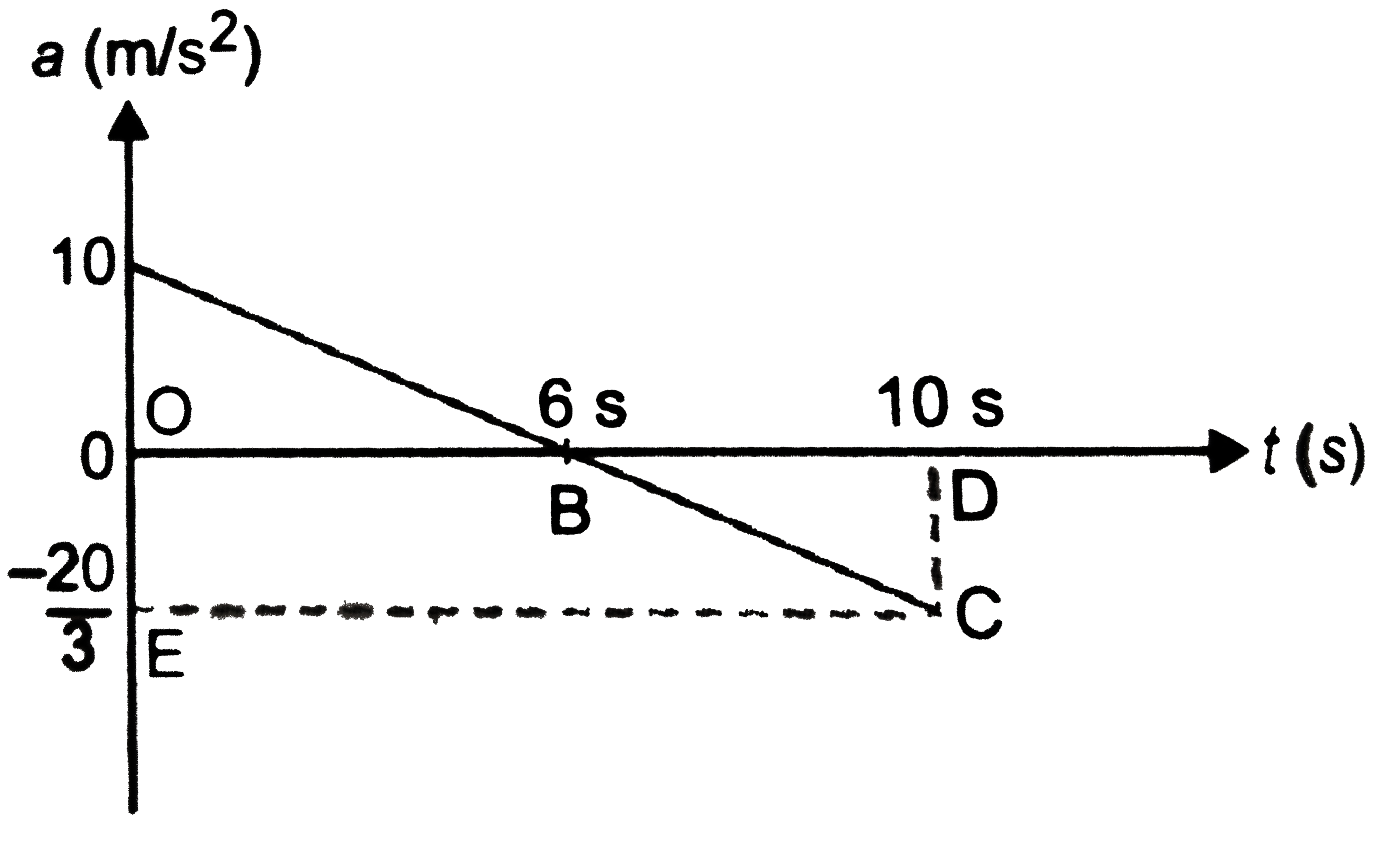A helicopter takes off along the vertical with an acceleration a=3ms−2 and zero initial velocity. In a certain time t1, the pilot switches off the engine. At the point of take - off, the sound dies away in time t2=30s. Determine the velocity v of the helicopter (in ms−1) at the moment when its engine is switched off, assuming that the velocity c of sound is 320ms−1.
The correct Answer is:80ms−1
Let t= time of accelerated motion of the helicopter.
Distance travelled by helicopter
+ Distanace travelled by sound
⇒12×3×t2=320(30−t)⇒t=803sec
Final velocity of helicopter
v=u+at=0+3×803=80m/s.
Topper's Solved these Questions
- KINEMATICSBOOK - ALLENCHAPTER - KINEMATICSEXERCISE - Exercise-05 [A]
11 Videos
- KINEMATICSBOOK - ALLENCHAPTER - KINEMATICSEXERCISE - Exercise-05[B]
5 Videos
- KINEMATICSBOOK - ALLENCHAPTER - KINEMATICSEXERCISE - EXERCISE-04[A]
35 Videos
- ERROR AND MEASUREMENTBOOK - ALLENCHAPTER - ERROR AND MEASUREMENTEXERCISE - Part-2(Exercise-2)(B)
22 Videos
- KINEMATICS (MOTION ALONG A STRAIGHT LINE AND MOTION IN A PLANE)BOOK - ALLENCHAPTER - KINEMATICS (MOTION ALONG A STRAIGHT LINE AND MOTION IN A PLANE)EXERCISE - BEGINNER S BOX-7
8 Videos
Similar Questions
A helicopter takes off along the vertical with an acceleration a=3m/s2 and zero initial velocity. In a certain time the pilot switches off the engine. At the point of take off, the sound dies away in a time t2=30sec. Determine the velocity of the helicopter at the moment when its engine is switched off assuming that velocity of sound is 320 m/s.
View SolutionA body is moving along the +ve X-axis with uniform acceleration of −4ms2 Its velocity at x = 0 is 10ms−1. The time taken by the body to reach a point at x = 12m is
View SolutionA body has an initial velocity of 3ms−1 and has an acceleration of 1ms−2 normal to the direction of the initial velocity. Then its velocity 4s after the start is.
View SolutionA particle moves along a straight line with a variable acceleration given in the acceleration - displacement (a−S) curve as shown in the figure. Determine the velocity (in ms−1) of the particle after it has travelled a distance of 30 m. The initial velocity is 10 ms−1.

View SolutionFrom a lift moving upwards with a uniform acceleration a = 2ms–2, a man throws a ball vertically upwards. with a velocity v = 12ms−1 releative to lift the ball comes back to the man after a time t find. t
View SolutionIf a particle starts moving with initial velocity u=1ms−1 and acceleration a=2ms−2, the veloctiy of the particle at any time is given by v=u+at=1+2t. Plot the velocity-time graph of the particle.
View SolutionThe acceleration time graph of a particle is shown in the Fig. 2 (CF). 11. At time t=0s velocity of the particle is 8ms−1. Its velocity t=10s is.
 .
.
View SolutionA body is projected with velocity 24 ms−1 making an angle 30° with the horizontal. The vertical component of its velocity after 2s is (g=10ms−1 )
View SolutionFind the velocity of sound in O2 at NTP. Given that the velocity of sound in the H2 at NTP is 1880ms−1 the density of oxygen is 16 times the density of hydrogen γ=1.4 for both the gases.
View SolutionA particle moves along the x-direction with constant acceleration. The displacement, measured from a convenient position, is 2 m at time t=0 and is zero when t=10s. If the velocity of the particle is momentary zero when t=6s, determine the acceleration a and the velocity v when t=10s.
View Solution
